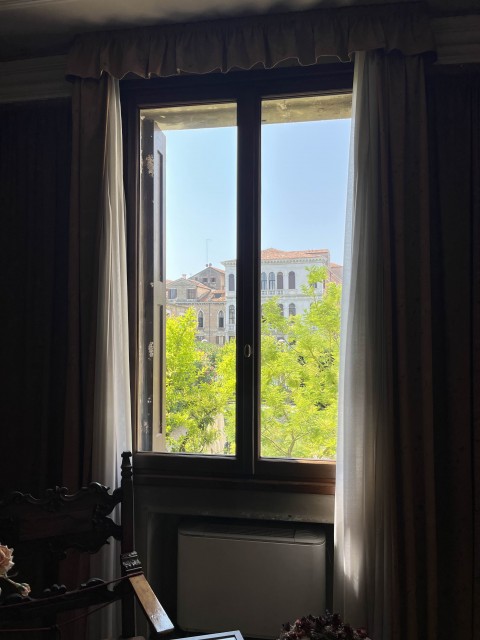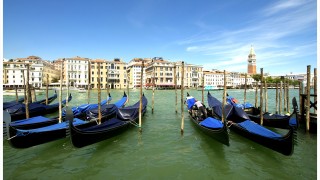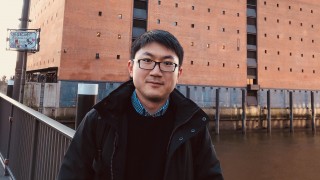"The ability to stand where a titan like Wagner stood, hearing the stories of his final days from an expert, served to not only educate, but enculture, and gave me the opportunity to immerse myself into the world which I read about at home."
The 13th of February, 1883 – Richard Wagner is dead. For his final winter, the composer had rented out an entire floor of Ca’ Vendramin Calergi, a palace on Venice’s Grand Canal, and would spend his last days here with his wife Cosima. Now, over 140 years later, Wagner’s final apartment has been converted into a museum holding the largest collection of Wagner items outside of his home in Bayreuth. Yet, getting into the museum would not be easy.

In the modern day, Ca’ Vendramin Calergi is not primarily known as being the location of Wagner’s final days, but instead as the home of Casino Venezia, one of the most famous casinos in all of Europe. As I was politely shown the door on a Sunday morning, the security guard, unaware a museum even existed inside the Casino to begin with, advised me to come back on a Friday night to ask around for any leads. So, I donned my suit and prepared myself for a night of gambling.
After very quickly losing all of my money I met a receptionist who at least knew of the museum’s existence. She informed me that the Wagner Association is an entirely separate entity from the casino, so unfortunately, she had no contact opportunities that I had not already tried. She even quipped that, upon hearing my difficulty reaching the museum, that perhaps the older person who oversaw the collection had died, and that nobody had noticed since the museum is almost never visited. Yet, she advised me that perhaps more information could be found in Venice’s Deutsche Student Association. Content with my next lead, I convinced myself that the 90 Euros I had lost on blackjack were simply a future admission fee to the museum.
As I was telling friends about the absurd series of events that had already occurred on my journey to visit Wagner’s apartment, I was informed that the Director of Columbia’s Summer in Venice program, Caroline Wamsler, had a connection within the Deutsche Student Association.
With things looking up, I excitedly asked her whether or not she knew anyone with a connection to the Wagner Association. As it turned out, Caroline’s friend Petra worked closely with the Wagner Association, and after a short phone call and email, I was finally scheduled to visit the Museo Wagner on the last day of my program. The catch? My tour guide, Dr. Robert Campello, spoke only Italian and German, languages with which I was utterly unfamiliar.
After two months of attempting to get into this museum, I was simply happy to be able to wander the halls and not understand a word of the tour, but as fortune had it, Columbia was here to help. My program coordinator, Laura DiNardo, offered to come with me and translate. So, together, we arrived at Casino Venezia at 9 AM to begin our tour.
The halls themselves were fascinating, encompassing Wagner's five private rooms of the 28 he had rented for his last winter in Venice. Unfortunately, none of the original furniture remains, both because Cosima had all of it shipped back to Bayreuth upon his death and because, until very recently, these rooms actually served as office space for casino administration.
Apparently, the employees were quite annoyed to have to give up their offices upon the discovery that "some guy" died there 100 years ago.
The collection was likewise very interesting, holding many Wagner-related items.
Amongst my favorites were a collection of letters from Cosima from across her life, in which you could see the progression of her last name from Liszt, to von Bulow, to eventually Wagner, as well as a series of original posters from Gran Teatro La Fenice, Venice’s premier opera house, advertising their very first performance of the Ring Cycle. While there was not much in Wagner's own hand, the museum did possess a short note he had given to a servant requesting a ridiculous 24 bottles of wine to be delivered to his room.
The centerpiece of the museum was the room in which Wagner died. Here, a replica couch was given to the museum from Bayreuth. This couch was the one on which Cosima placed her husband's body after discovering he had passed to spend some final moments with him before her return to Bayreuth for the funeral. Above this hangs a powerful sign which read “Qui mori Riccardo Wagner il 13 Febbraio 1883.”
Whilst Wagnerian idol worship isn’t what I was searching for when I began my odyssey to the museum, especially when looking at the man behind the music, I ended up getting so much more. The ability to stand where a titan like Wagner stood, hearing the stories of his final days from an expert, served to not only educate, but enculture, and gave me the opportunity to immerse myself into the world which I read about at home.


